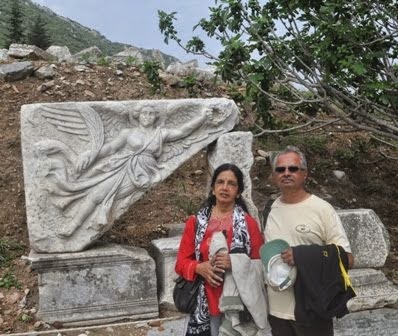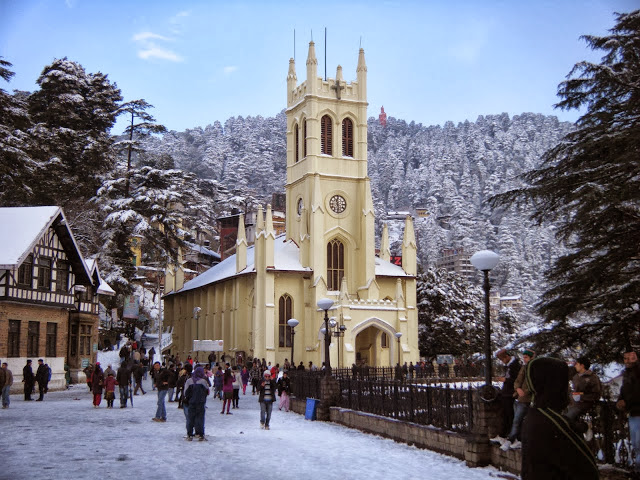MUSSOORIE
We left Shimla on 22nd Sept, 2013 after a
three days stay. We took the Volvo A/C bus from Shimla to Chandigarh. Very
comfortable. It took three and half an hours.
Chandigarh and Dehradun are not directly connected by rail or bus. To
avoid loss of time and hassle we took a taxi. We travelled via Dehradun and
with a half an hour break on the way for lunch we reached Shimla by 5.30 pm.
The mall road where we had our hotel was closed for vehicular traffic. We got
down at the famous Gandhi Chowk/Libraray End. We walked about a kilometer to
the hotel while our luggage was carried by a porter. We could have taken cycle
rikshaws, but we did not like the idea.
The hotel, as in all hill stations was situated on a
steep road of about 60 m. surprisingly all the rooms in the hotel faced the
road and then on the valley. It was an excellent view from the windows.
Mussoorie is called the Queen of Hill Stations!!!!!! It
is one of the most popular hill stations. Its history dates back to 1826 when
Captain Young, an adventurous Military officer found the place attractive and
laid its foundation.
The weather was excellent. Slightly cold in the evenings
but comfortable through the day. We just spent loitering around the bazaars and
enjoying the great view of the mountain from various view points.
The following are the places which we found interesting.
1. Kempty
Falls.
Kempty Falls is situated at a distance of 15
kms from Gandhi Chowk. There are buses and taxis to ferry public. From the
road, base of the Kempty falls is about 100 meters. There is a cable car
service to take you down. The place is not well maintained. There are stalls
selling bath wear, towels etc., in case someone wants to get into the water. Heavily
crowded with people.
The fall itself quite majestic. Even
though water falls from a great height, it is broken at intervals and last fall
is just around 40 ft.
2. Gun
Hill
Gun Hill is situated about 400 Metres
above the mall and is the second highest point in Mussoorie. It is at an
elevation of 2122 m above MSL and offers a panoramic view of the Himalayas.
During the British regime a gun situated here used to be fired at noon, thus
the name of the place. The water tank for Mussoorie water supply is situated
here. Gun Hill can be approached by a rope way car system from mall Road or a
bridle path which takes about half an hour.
3. Camel’s
back Road
This road starts from the Library end, is
about 3 kms .long and ends near the Rink in Kulri Bazaar. The road offers a
good view of sun set. There is a hill which resembles a siting camel and hence
the name. It is an extremely pleasant walk/horse ride of about 40 minutes.
4. Shedup Choepelling Temple
This is a small Budhist temple about 10 kms from Library End. There are
two good paintings on the outside wall. A very silent place and gives a
panoramic view of the Himalayas. Dalai Lama visited this temple some time back.
Unlike Shimla, the bazaar in Mussoorie is quite big. The first one starts
at the Library and is about a kilometre long. The second and third are Landour and
Kulri Bazzars at the other end of Mall road and have bigger restaurants and
shops.
On 26th Sept, we took a taxi from Mussoorie to
Jolly Grant Airport which is about 60 kms away for our journey back home.








































